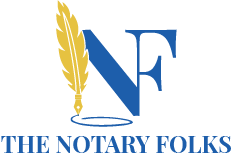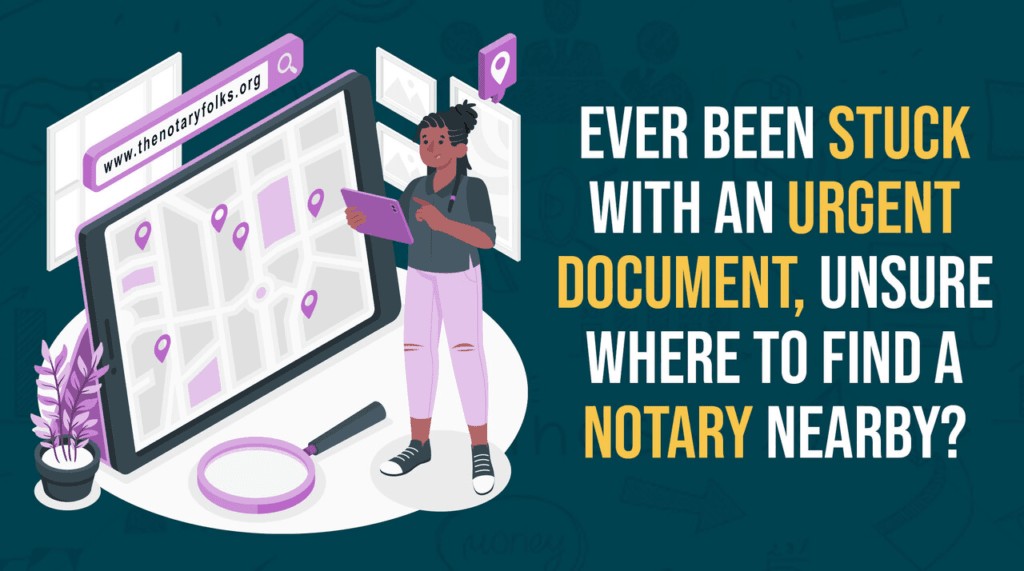
Imagine this: You’ve got an important document that needs notarization, but it’s missing the usual “notary section.” Panic sets in, right? Don’t stress! Whether you’re dealing with an unexpected situation or a document drafted without standard notary sections, this guide is your secret weapon. Explore a series of steps on how to notarize a document without a notary section. Let’s begin with understanding notarization and common reasons for missing notary sections.
Table of Contents
1. Understanding Notarization
2. Common Reasons for Missing Notary Sections
3. Step-by-Step Guide to Notarizing a Document Without a Notary Section
- Step 1: Prepare the Document
- Step 2: Find a Notary Public
- Step 3: Schedule an Appointment
- Step 4: Explain the Situation to the Notary
- Step 5: Sign the Document in Front of the Notary
- Step 6: Notary Completes the Acknowledgment
- Step 7: Finalize the Document.
5. Alternative Methods for Notarization
6. Tips: How to Choose the Right Notary Service
Important Considerations7. Frequently Asked Questions
8. Conclusion
Understanding Notarization
Notarization is an important process that adds a layer of security and authenticity to crucial documents. A notary public serves as an impartial witness who verifies the identities of the signers, ensuring they are who they claim to be.
Key Elements of Notarization
- Identity Verification: Notaries check IDs to confirm identities.
- Witnessing Signatures: They observe the signing to ensure legibility and authenticity.
- Official Seal: After completion, the notary places an official seal, which serves as a stamp of approval.
Why It Matters
The notarization process helps prevent fraud and ensures that documents have legal validity, making them essential for legal contracts, wills, and property documents.
Understanding a Notary Section in a Document
A notary section is a crucial element in many official documents requiring notarization. This section is specifically reserved for the notary public who oversees the signing process, ensuring its authenticity and legality.
Key Features of a Notary Section
Within this section, the notary public will:
Record the Meeting Location: Details about where the notary met with the signer are essential.
Note the Date: The specific date the notarization took place must be documented.
Describe the Notarial Act: This could involve actions like administering an oath or acknowledging the signer’s identity and intent.
Identify the Signer: The name of the individual signing the document needs to be clearly stated.
Uniformity and Variations
While every state imposes its unique set of rules for notarial acts, several common elements are present across jurisdictions. The section will typically include spaces or prompts for the notary to add the necessary information, ensuring clarity and compliance with local laws.
Challenges with Notary Sections
Sometimes, documents might not have a clearly defined notary section. If you encounter such an issue, it’s advisable to:
Contact the Document Originator: Reach out for clarification on where the notary can include their details.
Consult State Guidelines: Verify state-specific requirements to ensure all necessary information is included correctly.
Utilize a Notary Block: If appropriate, a notary can add a standardized notary block that includes all required elements.
Understanding and correctly filling out a notary section not only validates the document but also protects all parties involved in the transaction.
Common Reasons for Missing Notary Sections
Some documents don’t have a special spot for a notary to sign. This can happen because:
- It’s just a casual agreement: Sometimes people write things down without thinking they’ll need it to be official later.
- It’s a personal letter: Letters between friends or family usually don’t need to be notarized.
- It’s a business deal: Sometimes companies create contracts without thinking about needing a notary.
“Pro Tip: Even without a notary section, you can still get these documents notarized by following the proper steps outlined in this guide on how to notarize a document without a notary section.”
Step-by-Step Guide to Notarizing a Document Without a Notary Section
If you’re looking to learn how to notarize a document without a notary section, follow these detailed steps:
Step 1: Prepare the Document
Before meeting with the notary, take some time to go through your document carefully. Make sure every section is filled out and there are no empty spaces or missing details. Look for any places where signatures are needed and be sure they’re all there. It’s also a good idea to do a quick online search or call your local government office to find out if your state has any special rules for notarizing documents. Sometimes, you might need to bring witnesses or have extra paperwork ready. By doing this preparation, you’ll save time and avoid any issues when you’re at the notary’s office.
Step 2: Find a Notary Public
To find a notary public, you have a few easy options. First, look around your neighborhood. Many banks and law offices have notaries on staff who can help you. If you don’t find one there, you can search online for notary directories. These websites list notaries in your area. If you’d rather not travel, you can use a mobile notary service. This means the notary will come to you, which can be very convenient. They might meet you at your home, office, or even a coffee shop.
Important Note: No matter which option you choose, it’s important to make sure the notary is allowed to do their job in your state. Always confirm the notary’s eligibility to operate in your state.
Step 3: Schedule an Appointment
To get your document notarized, start by reaching out to a notary public. You can do this by phone or email to set up a convenient time for your appointment. When you contact them, make sure to mention that your document doesn’t have a specific notary section. This helps the notary prepare for your visit.
Before your appointment, get everything ready. The most important thing is to gather proper identification for everyone who needs to sign the document. Usually, a driver’s license or passport works well. Make sure these IDs are current and not expired.
On the day of your appointment, bring all the signers with you. Everyone who needs to sign the document must be present in person. The notary needs to verify each person’s identity and witness them signing the document. By having everyone there and bringing the right identification, you’ll help ensure a smooth and efficient notarization process.
Step 4: Explain the Situation to the Notary
When you meet with the notary, show them the document and explain that it doesn’t have a standard notary section. Let the notary know you need their help to validate the document officially. The notary can indeed attach their own certificate to the document. However, they must first determine what type of notarial certificate you require. This is a crucial step, as different documents may necessitate different types of notarization, such as an acknowledgment or jurat.
The notary will review your options and create a special statement or certificate to attach to your document. This additional page will serve as the official notarization, confirming that you signed the document in their presence. The notary will guide you through this process, ensuring your document is properly notarized even without a pre-existing notary section. By understanding the specific requirements of your document, the notary can ensure that the notarization aligns with legal standards.
Step 5: Sign the Document in Front of the Notary
When you’re getting a document notarized, it’s important to wait until you’re with the notary before signing anything. Don’t sign the document ahead of time, even if you think it might save time. The whole point of notarization is for the notary to watch you sign, making sure it’s really you doing it. This way, they can confirm that the signature is genuine. When you’re with the notary, they’ll ask you to sign the document while they watch. They might also ask you some questions or need you to clarify some information as you’re signing. This is all part of their job to make sure everything is correct and above board.
Step 6: Notary Completes the Acknowledgment
The notary will make a special paper called an acknowledgment. This paper will list important details like what your document is called, who signed it, when it was notarized, and the notary’s own signature and official mark. The notary will either stick this acknowledgment onto your document or make it a separate paper that mentions your document.
Step 7: Finalize the Document
After the notary has completed their part, take a moment to carefully review the entire document. Make sure all names are spelled correctly, dates are accurate, and the notary’s seal is clear and properly placed. Once you’re satisfied everything is correct, it’s a good idea to make a few photocopies of the fully notarized document for your own records. You might need these copies in the future, so keep them in a safe place. Finally, put the original notarized document somewhere secure, like a fireproof safe or a safety deposit box at your bank. This way, you’ll always have access to both the original and copies when you need them.
Alternative Methods for Notarization
If a traditional notary is not available, consider these alternatives:
- Mobile Notary Services: Notaries who travel to meet you wherever you are.
- Online Notarization: Get documents notarized remotely.
- Notary Signing Agents: Experts for real estate documents.
For more details on finding notary services, you can visit the American Association of Notaries for authoritative resources.
Tips to Choose the Right Notary Service
What to Look For: When selecting a notary public, consider their credentials, experience, and reliability. Ensure they are licensed and authorized in your state and have a good professional reputation.
Questions to Ask: Before booking an appointment, ask the notary about their fees, schedule, and any specific requirements for your document. Also, ask how they handle documents without a notary section and the process for creating acknowledgment statements or certificates.
Important Considerations
- Know Your State’s Laws: Notary laws vary by state, so ensure compliance with local regulations.
- Do Not Forge Signatures: Forgery is illegal and punishable by law.
- Cost of Notarization: Notaries charge fees, so inquire about costs in advance. The exact cost can depend on several factors, including your location and the specific type of document you need notarized. Fees may vary by state or region due to differing regulations, and some documents might require more specialized attention. Always ensure you have a clear understanding of these variables to avoid unexpected expenses. By asking the right questions upfront, you can ensure transparency and make an informed decision when selecting a notarial service.
What Happens If You Submit a Document That's Not Fully Notarized?
Submitting a document that isn’t fully notarized can have several consequences, the most common being rejection of your submission. Here’s what you need to know:
Rejection of Agreement: Incomplete notarization often results in the document being deemed invalid. This can lead to the rejection of any agreements or contracts associated with the document.
Time Delays: You may need to restart the entire notarization process, which can be time-consuming. This delay might affect important deadlines or disrupt plans relying on the document’s approval.
Additional Costs: If the process needs to start over, you could incur extra fees, either from the notary service provider or from expediting a new document through.
Legal Implications: Depending on the nature of the document, failing to have it properly notarized could lead to legal ramifications, particularly if it’s a legal contract or an important legal filing.
To avoid these complications, double-check that all required pages are notarized and that each signature and seal is correctly applied. Ensure clarity and completeness before submission to keep the process smooth and efficient.
Frequently Asked Questions

1. Is self-notarization legally binding?
Self-notarization isn’t always legal. Check your local laws to see if it’s valid where you are.
2. Can any document be notarized without a notary?
Some papers can be notarized by yourself or in different ways, but other papers need an official notary to sign them.
3. Are online notarizations secure?
Online notary services use high-tech security to verify documents. Pick a trusted service for the best results.
Can You Notarize a Document Without a Notary Certificate?
Notarizing a document without a designated notary certificate section is typically not feasible. Here’s why:
Importance of a Notary Certificate
Legal Requirement: The notary certificate serves as official proof that your document has been properly notarized. Without it, the notarization process is incomplete.
Rejection Risk: Submitting a document for validation without a notary section can lead to it being rejected by the entity requesting it.
Notary Liability: Notaries are bound by legal and ethical standards. If they certify an incomplete document, they risk disciplinary actions, including fines or suspension.
What to Do If Your Document Lacks a Notary Section
If your document doesn’t feature a notary section, consider these steps:
Consult a Professional: Speak with the institution or legal professional connected to your document for guidance on how to proceed.
Attach a Loose Certificate: Ask the notary if a loose certificate can be attached. This is an additional page that contains the necessary notarial language.
State Requirements: Familiarize yourself with state-specific notary laws. Certain states may allow different forms of certification.
Proceeding without the proper notary certificate risks invalidating your document and could cause unnecessary delays in whatever legal or official processes you are undertaking.
How Long Does It Take to Get a Document Notarized?
Getting a document notarized is typically a quick and straightforward process, but the time it takes can vary depending on how you choose to get it done.
In-Person Notarization
Finding a Notary: The most time-consuming part can often be finding a notary. They are usually available at banks, law offices, and some shipping retail outlets like UPS or FedEx. Depending on your location, this could take from a few minutes to several hours.
The Notarization Process: Once you’ve located a notary and set an appointment (if needed), the actual notarization process generally takes only about 5 to 10 minutes. The notary will verify your identity, witness you signing the document, and then apply their seal or stamp.
Online Notarization
For a more efficient experience, you might opt for online notarization.
- Virtual Notary Services: Using services like DocuSign or Notarize, you can connect with a notary through a video call. This process eliminates travel time and can be completed in as little as 10 to 15 minutes, including verification and signing.
Whether you choose in-person or online notarization, ensure you have all the necessary documents and identification on hand to avoid delays.
Conclusion
Notarizing a document without a notary section is straightforward if you follow the steps outlined in this guide on how to notarize a document without a notary section. Whether through traditional notary services or mobile and online alternatives, you can ensure your documents are legally valid and trustworthy.
Ready to notarize your document?
Don’t wait! Find a notary public near you or explore mobile and online notarization options today!
📅If you have any questions or need assistance on how to notarize a document without a notary section, simply schedule an appointment with us by clicking on the button below – we are here to help!


